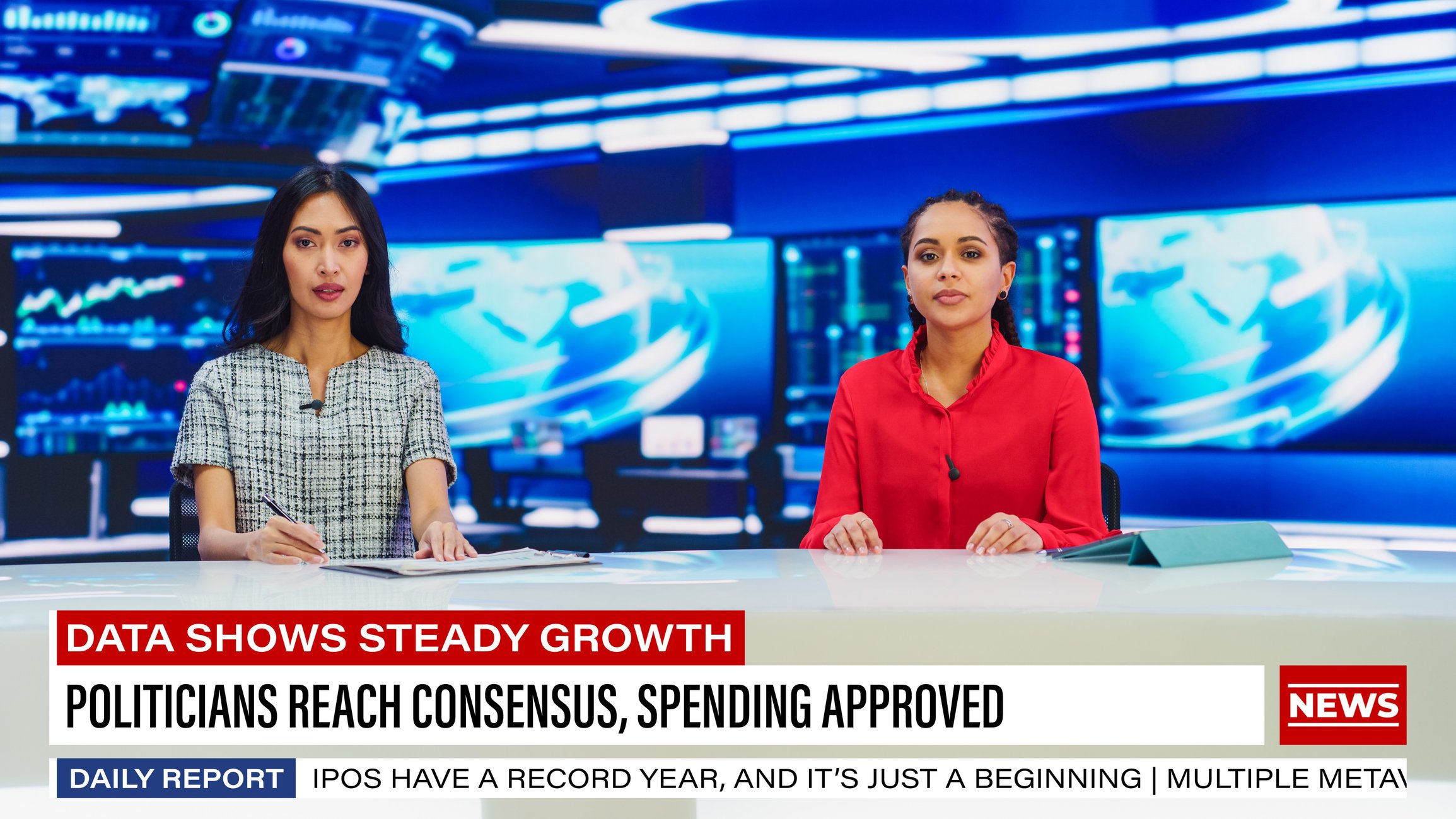The Stagnation of On-Air Production Broadcast Graphics: Why Change is Needed
We see production broadcast graphics every day on the news, in live sports, and more yet the technology to create these key assets has largely remained the same for the last 10+ years. It’s been a long time since a new product has been introduced. When you think about the creative possibilities afforded by technology like Unreal Engine, it’s easy to see that there’s plenty of untapped potential for greater visual impact in broadcast graphics.

Right now, there are a few key players in the space with their own tools, each with their own workflow, user interface, and associated nuances of use, but the end result they output is largely identical. As a result, creating on-air graphics today causes strain in several different ways.
1. The Workflow is Painful
Creating broadcast graphics packages today is tedious and inefficient, largely due to workflow incompatibility and technology silos. Typically, it involves using Photoshop to create static visuals which must then be migrated into After Effects where they are animated. Once the animation is complete and the graphics are presented to and approved by supervisors, they are then migrated to another platform such as Ross or Vizrt, where it is rebuilt. It might sound simple in theory, but the reality is that this process takes forever, and it’s not integrated with other broadcast workflow tools.
2. Each Tool Has a Different Workflow
As mentioned, any of the current broadcast production graphics tools on the market has a different workflow. This creates bottlenecks and makes it hard for users to be agile when changing jobs or freelancing. It’s difficult and time-consuming to learn how to use a completely new tool to achieve the same result.
When you factor in that the current market trend is to use Unreal for just virtual studios, augmented reality, and extended reality and then use a completely different system for CG/production graphics, it’s easy to see how things get even more complicated. This approach requires the operators to learn multiple systems for a single graphics package, making it even less likely that all operators will be capable of using all the applications needed to get graphics on air.
3. Creativity is Stifled by the Limitations of Today’s Systems
Since the technology powering broadcast graphics hasn’t changed over the last 10 or so years, most graphics packages are more or less the same; they all feature a similar approach to textures, effects, and animation. And that’s because of the limitations to the systems in use; the latest technology is now capable of far better visuals and offers effects such as particles, lumen, and nanite.
4. Smaller Broadcasters Are at a Disadvantage
Unless you’re a major broadcaster, you don’t have the time or budget to overcome the previous pitfalls we’ve mentioned - they’re expensive! Everything about the inefficiencies of the current way of doing things comes at a huge cost and puts smaller broadcasters at a disadvantage. Without production graphics, it’s hard to compete with the major players and they end up with fewer branding and ad revenue opportunities.
So, What Do We Do About This?
It's clear that the current approach to broadcast graphics is outdated and inefficient. However, change is on the horizon. Our Senior Product Director of Motion and Production Graphics, Gideon Ferber, is leading the charge in tackling these challenges head-on. Our platform and new integrations leverage the latest game engine technology to bring new capabilities to broadcast studios of all sizes without requiring special technical teams, extensive learning curves, and high costs.
In our next blog, we'll dive into the specifics of how we're leveraging Unreal Engine to revolutionize the on-air graphics space. With these new capabilities, broadcasters of all sizes will be able to create dynamic and creative graphics packages, providing more branding and revenue opportunities. Stay tuned!
If you would like to learn more in the meantime, get in touch or discover the impact of our current production solutions.

.jpg?width=300&name=iStock-1169475494%20(1).jpg)
COMMENTS